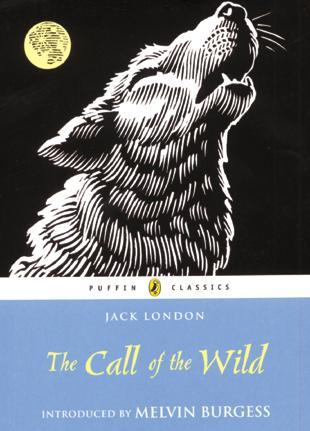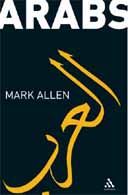After reading this
article on the 14th Annual Amman International Book Fair, I got to thinking about reading in Jordan: both the reading that I do and the reading that I observe around me. I've come to the realization that I have never once seen a Jordanian read for pleasure. In my 11 months in Jordan I have only ever seen Jordanians read three things: The Holy Qur'an, textbooks, and the occasional newspaper (though I must admit that I see newspapers used more often as tablecloths than as reading material).
While my personal experience in conservative and rural Jordan may not be fully accurate, there is no denying this quote from
The Economist:
The Middle East has a bad reputation when it comes to books; nowhere else do so few people read them.
Why could this be?
This
Israeli study claims that the minute differences that exist between several groups of letters in written Arabic cause extra strain on the left brain, thereby inhibiting the right brain from becoming involved in the act of reading. Though one cannot discount that there is very likely an obvious bias against all things Arab by the researchers, in my personal experience reading Arabic is incredibly difficult. Though I can now speak and listen about familiar topics fairly fluently in Arabic, my reading and writing skills are still quite low. I would even venture to say that, after being immersed in Arab culture for 11 months and studying Arabic for 15 months, I can write in Arabic more quickly than I can read even my own writing.
Is this why Arabs don't read for pleasure, because reading is "hard for the brain" and disengages the right brain? If the script were different would the right brain be more activated and Arabs would find more pleasure in reading?
That may well be a factor, but another factor which I cannot seem to find anyone talking about is the fact that the languages spoken by native Arabic speakers and the language of written Arabic are
not the same languages. Written Arabic has changed very little in the 1500 years that have passed since Allah revealed the Qur'an through Archangel Gabriel to Prophet Mohammed in Arabic. Between the years 610 CE and 632 CE Allah revealed the Qur'an to Mohammed in Arabic. This remains today one of the things that Arabs take the greatest pride in: The fact that Allah speaks Arabic.
Throughout the Arab world there continues to this day to be a strong force to keep alive the 7th Century Arabic of Allah; however, there does not exist a language on Earth that has not undergone changes in the past 1500 years. Arabic is no exception. In Jordan alone, a country of only 7 million, there are at least seven distinct accents or dialects of Arabic. When you consider the fact that there are 22 Arab countries and approximately 300 million Arabic speakers you can imagine how many different dialects of Arabic have evolved over the last millennium and a half. Many of these "dialects" are mutually incomprehensible, i.e. Jordanian Arabs cannot understand when a Moroccan Arab or a Tunisian Arab speaks his or her native language.
To give you some context, Beowulf was written in English not long after the Qur'an was revealed. I don't know about you, but when I was asked to read Beowulf I barely understood the story and certainly took no pleasure from the experience. If I continually tried to read things like Beowulf, I too would lose interest in reading. Nevertheless, all Arab countries insist upon 7th Century Qur'anic written Arabic to maintain their ties to each other and to Allah, despite the fact that
almost no young Arab can fluently and accurately speak, let alone read, Qur'anic Arabic.
The insistence among Arabs to maintain Qur'anic Arabic has resulted in an educational system where literature has no place. While American students read novels and poetry and the like in "English" class, when the boys at my school go to "Arabic" class, they are in effect learning a foreign language, and the class is taught as foreign languages have traditionally been taught. Students focus primarily on grammar, secondly on vocabulary (as a large percentage of "Standard Arabic" vocabulary is not used in my students' home language), and finally on pronunciation: One of the beauties of the Qur'an is that, in 7th Century Arabic, it is incredibly lyrical. One of the only culturally acceptable forms of music are a cappella recitations of Qur'anic scripture. However, if someone were to recite the Qur'an in any one of the Arabic dialects of today, not only would it be blasphemous, but it would lose all of its musical and poetic qualities.
My hypothesis, therefore, is that reading in Arabic is not "hard for the brain" primarily because the letters look alike, but rather because reading in Arabic, for Arabs, is akin to reading in a foreign language.
As long as written Arabic and the dialects of spoken Arabic continue to grow further and further apart, I see little hope for encouraging reading for pleasure among Arabs.
I, on the other hand, like my buddy
Mark McCann in China, have done a significant amount of reading in the year plus that has passed since I accepted my invitation to join Peace Corps Jordan. The remainder of this post may very well be of no interest to many of you, but all this talk about reading has inspired me to compile a list of the reading that I have done in, and in preparation, for Jordan. If you're curious what a 29-year-old Peace Corps English Teacher Volunteer reads in Jordan, then scroll down and take a look:
- I'll start with non-fiction books about Arab history and culture:
T.E. Lawrence - The Seven Pillars of Wisdom
King Abdullah II - Our Last Best Chance
Margaret K. Nydell - Understanding Arabs: A Guide for Modern Times
Philip Robins - A History of Jordan
Raphael Patai - The Arab Mind
Milton Viorst - Sandcastles: The Arabs in Search of the Modern World
Albert Hourani - A History of the Arab Peoples
- Next, I'll move to novels:
Jack London - White Fang
Jack London -
The Call of the Wild
Alexandre Dumas -
The Count of Monte Cristo
Jane Austen -
Pride and Prejudice
- Here we have three, quite different, non-fiction pieces:
Warren St. John -
Rammer Jammer Yellow Hammer
David Sedaris -
Dress Your Family in Corduroy and Denim
Karl Marx -
Communist Manifesto
- Here are two books that I tried to read and couldn't finish (I'm sure you'll understand why):

James Joyce -
Ulysses
Alfred Lord Tennyson -
Idylls of the King
- Next, these are the guidebooks and Arabic language books that I am still making my way through:
Kristen Brustad, Mahmoud Al-Batal, Abbas Al-Tonsi -
Al-Kitaab
Jack Smart and Frances Altorfer -
Complete Arabic
Jenny Walker and Matthew D Firestone -
Lonely Planet Jordan
Di Taylor and Tony Howard -
Jordan: Walks, Treks, Caves, Climbs & Canyons
- Finally, here are the three books that I am reading right now:
Sir Richard Burton (Translator) -
Arabian Nights: The Book of A Thousand Nights and A Night
Mark Allen -
Arabs
Dante Alighieri - Divine Comedy: Inferno
(completed)
(completed)
(completed)
(in progress)
(in progress)






































 James Joyce - Ulysses
James Joyce - Ulysses









